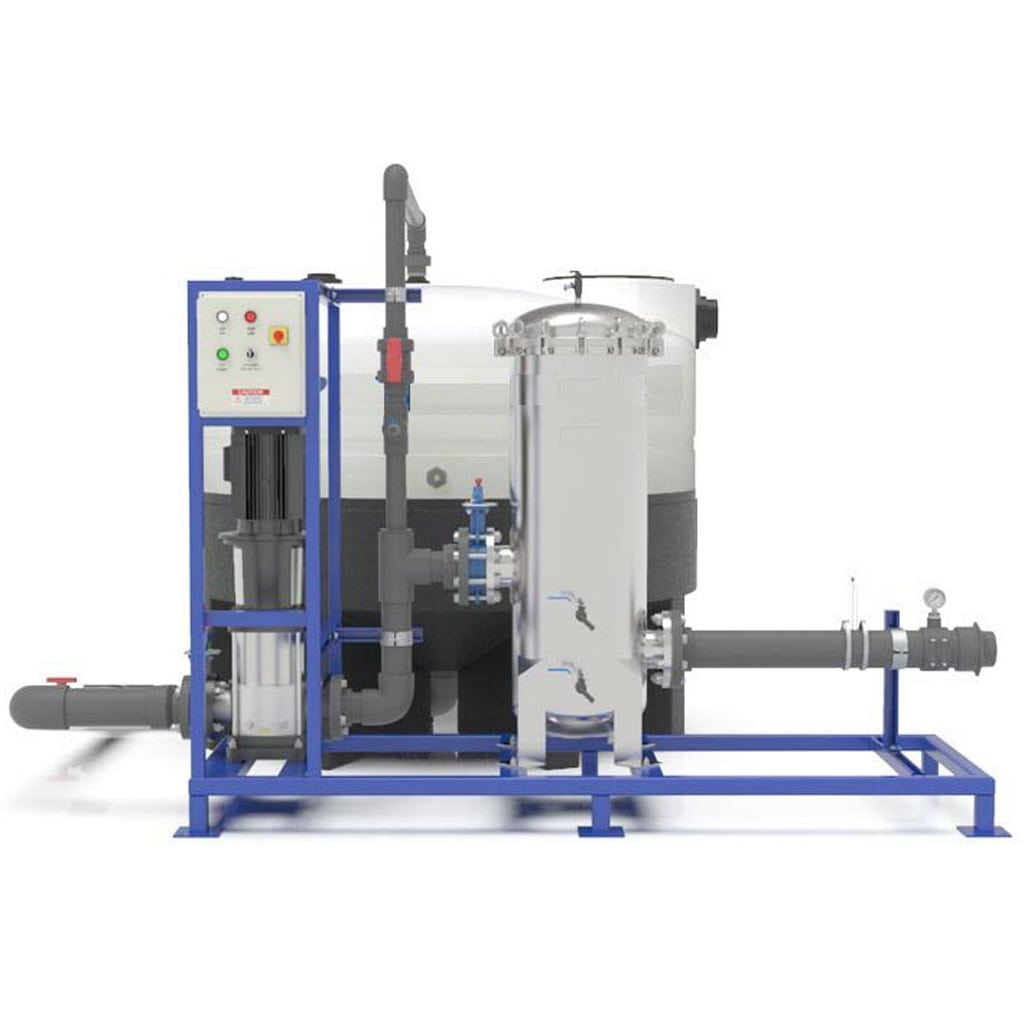A CIP in an RO Plant is necessary to prolong membrane life and maintain high productivity in your RO system. For effective CIP membrane cleaning, you will ensure there is enough time to complete the cleaning process. Stopping a CIP’s duration may result in lower production and performance.
Membrane Cleaning Skid
The membrane cleaning skid is designed for manual operation through a local control box located on the skid. A chemical storage tank is mounted on its own stand and connected to the membrane cleaning skid with either hard PVC piping or quick disconnect fittings and flexible hoses. This gives the unit the ability to be mounted in a permanent location or totally portable if desired. The piping is schedule 80 PVC that is hydrostatically tested at the factory. The electrical enclosure is NEMA 4X. All membrane cleaning skid wiring is completed and tested before shipment.
Membrane Cleaning Chemicals
Acid and alkaline cleaning chemicals are most commonly used for membrane cleaning. Acid cleaners are designed to remove inorganic and iron deposits. Acid cleaning should be performed at a pH of about 2. Alkaline cleaners are designed for the removal of biological matter, organic foulants, and silica deposits. Alkaline cleaning is performed at a pH of about 12.
Membrane Cleaning Process
Reverse Osmosis membrane elements can experience a decline in performance due to the accumulation of deposits on the membrane surface. Mineral scale, colloidal particles, biological matter, and insoluble organic compounds are the usual causes of membrane fouling. When production of a Reverse Osmosis system drops by at least 10 percent, or the differential pressure increases by 15 percent (over normal operating conditions), membrane cleaning should be performed using a membrane cleaning skid. The following is a summary of the design of ZamZam, Inc. membrane cleaning skids and cleaning chemicals
|
|||||










Reviews
There are no reviews yet.